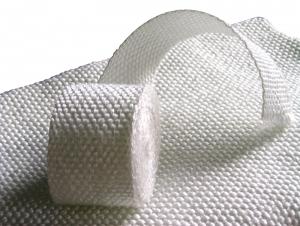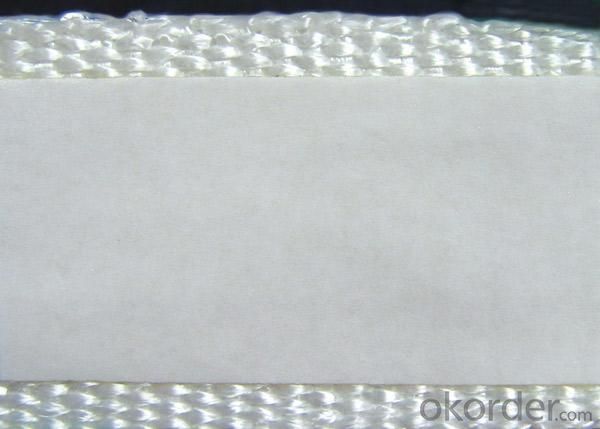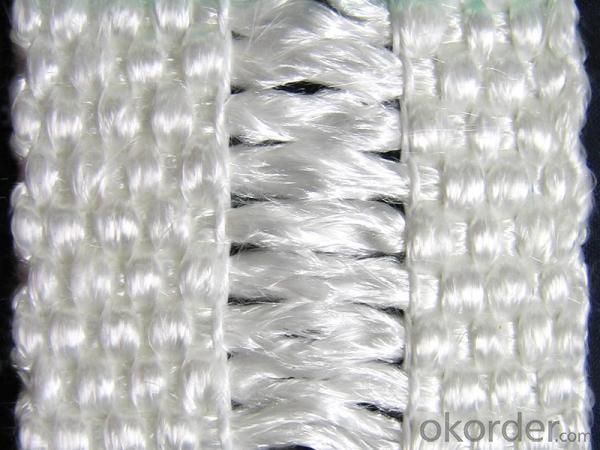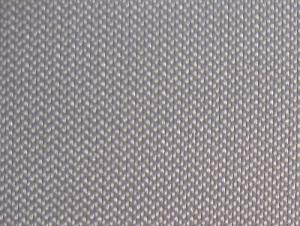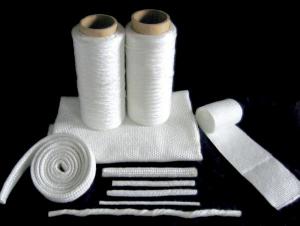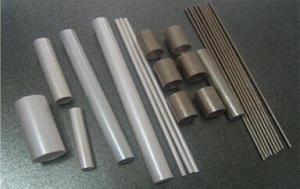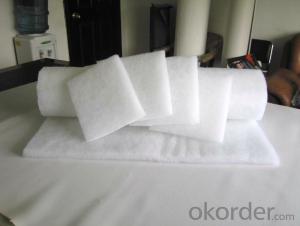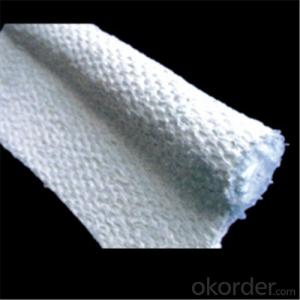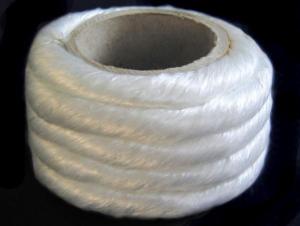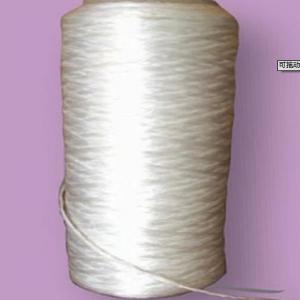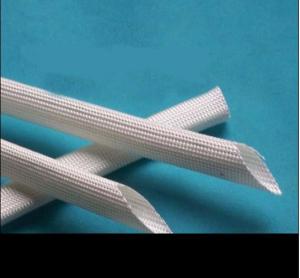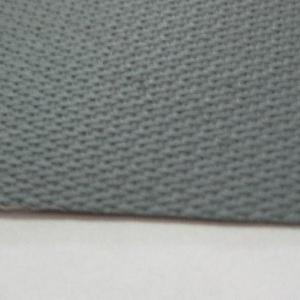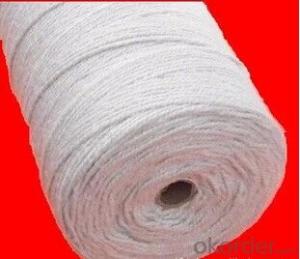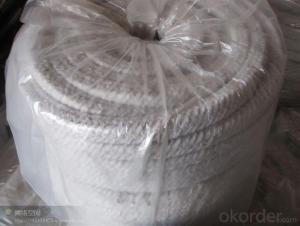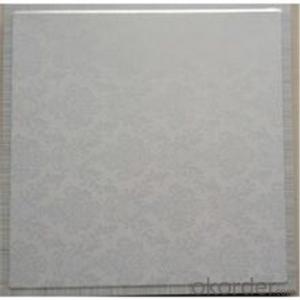Glass Fiber Textiles Textured Fiberglass Adhesive Tape
- Loading Port:
- China Main Port
- Payment Terms:
- TT or L/C
- Min Order Qty:
- 5t kg
- Supply Capability:
- 2*/20FCL Per Month kg/month
OKorder Service Pledge
OKorder Financial Service
You Might Also Like
Basic info of Textured Fiberglass Adhesive Tape It is fabricated from high quality texturized C glass or Eglass fiber yarns that will not burn and will withstand continuous exposure to temperatures of 1022F/550C.
2. It resists most acids and alkalis and is unaffected by most bleaches and solvents.
3. It is an excellent substitute for asbestos tape.
4. Texturized fiberglass tape with copper wire, nickel wire or stainless wire are also available.
Applications of Textured Fiberglass Adhesive Tape:
1. All types of thermal insulation and heat protection provide of industrial wires, cables, hoses, tube and pipe and also provide thermal insulation and personnel protection.
2. Used as a gasket or seal.
Features of Textured Fiberglass Adhesive Tape
Good alkali resistance
High tensile strength and resistance to deformation
Excellent self-adhesiveness
Good smoothness
Convenient application in construction
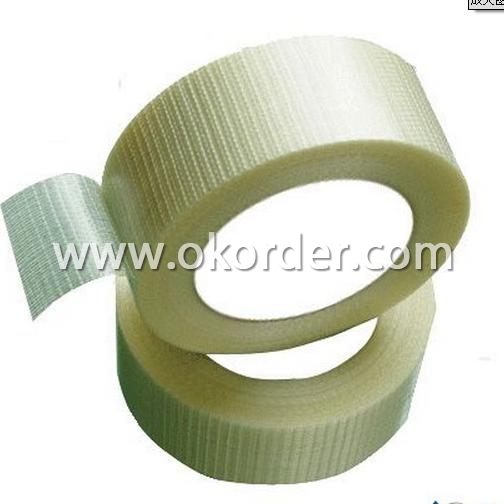
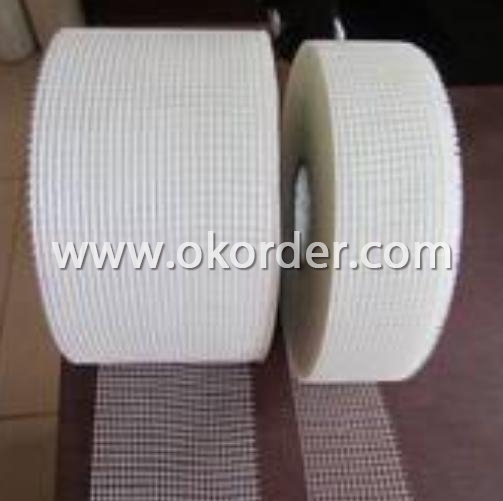
- Q: What are the different weight options for glass fiber textiles?
- Glass fiber textiles are available in a variety of weight options to meet different applications and requirements. Typically, the weight of glass fiber textiles is measured in grams per square meter (gsm) or ounces per square yard (oz/yd²). The weight options for glass fiber textiles can vary from very light to heavy, depending on their intended use. Lighter weight options, approximately 100-200 gsm (3-6 oz/yd²), are commonly utilized in applications where flexibility and drapeability are crucial, such as clothing, curtains, and lightweight reinforcements. Medium weight options, typically ranging from 200-400 gsm (6-12 oz/yd²), are widely used in various applications, including automotive parts, boat hulls, and composite reinforcements. These textiles offer a favorable balance between strength and flexibility, making them suitable for different structural and reinforcement purposes. For more demanding applications that require higher strength and rigidity, heavier weight options are available. These can range from 400-1000 gsm (12-30 oz/yd²) or even higher. These textiles find common use in industries like aerospace, construction, and infrastructure, where the materials must withstand significant loads while providing enhanced structural integrity. Ultimately, the selection of weight option for glass fiber textiles depends on the specific requirements of the application, such as the desired level of strength, flexibility, and rigidity. Manufacturers and suppliers of glass fiber textiles offer a broad range of weight options to meet the diverse needs of different industries and applications.
- Q: Can glass fiber textiles be used in industrial filters?
- Yes, glass fiber textiles can be used in industrial filters. Glass fiber textiles possess excellent filtration properties, making them ideal for use in various industrial filtration applications. These textiles can effectively capture and remove fine particles, dust, and other contaminants from air, liquids, and gases. They have a high filtration efficiency and can withstand high temperatures and harsh chemical environments, making them suitable for use in industries such as automotive, aerospace, pharmaceuticals, and manufacturing. Glass fiber textiles are also known for their durability, low maintenance requirements, and long service life, making them a cost-effective choice for industrial filters.
- Q: Are glass fiber textiles resistant to abrasion?
- Glass fiber textiles have a general resistance to abrasion. They are produced by weaving strands of glass fibers, which are widely recognized for their exceptional strength and durability. These textiles find frequent use in contexts that prioritize protection against abrasion, such as in protective clothing, industrial fabrics, and reinforcement materials. The robust and inflexible characteristics of glass fibers enable them to endure rubbing or scraping against various surfaces without succumbing to wear or fraying easily. As a result, glass fiber textiles are highly favored within industries that demand materials possessing superb resistance to abrasion.
- Q: What are the advantages of using glass fiber textiles?
- Glass fiber textiles have various advantages when used in different applications. To begin with, they offer remarkable strength and durability. With a high tensile strength, they can endure significant tension without breaking or tearing. This makes them ideal for situations that require a strong and long-lasting material, such as reinforcing concrete structures in the construction industry. Furthermore, glass fiber textiles exhibit high resistance to heat and fire. They possess a low thermal conductivity, meaning they do not easily conduct heat. Consequently, they are suitable for applications involving high temperatures, like insulation materials for fire-resistant clothing or thermal protection systems in the aerospace industry. In addition, glass fiber textiles are lightweight and flexible, enabling them to be easily woven into various shapes and sizes. This versatility allows for their application in industries such as automotive, aerospace, and sports equipment manufacturing, where weight reduction and design flexibility are vital. Moreover, glass fiber textiles boast excellent chemical resistance. They are highly resistant to corrosion from most chemicals, which makes them suitable for use in corrosive environments, including chemical processing plants or wastewater treatment facilities. Additionally, glass fiber textiles possess good electrical insulation properties. They exhibit low electrical conductivity, which makes them ideal for applications that require electrical insulation, such as the production of electrical cables or circuit boards. Lastly, glass fiber textiles are environmentally friendly. They are made from natural materials like sand and can be recycled, reducing their impact on the environment. Furthermore, their long lifespan results in reduced waste and the need for frequent replacements. In conclusion, the advantages of using glass fiber textiles include their exceptional strength and durability, resistance to heat and fire, lightweight and flexible nature, chemical resistance, good electrical insulation properties, and environmental friendliness. These properties make them the preferred choice in a wide range of industries and applications.
- Q: What are the environmental impacts of glass fiber textile production?
- The environmental impacts of glass fiber textile production include the consumption of large amounts of energy and water during the manufacturing process. Additionally, the production of glass fibers often involves the use of chemicals and resins that can be harmful to the environment if not properly managed. The disposal of waste materials generated during production can also pose a challenge, as glass fibers are not easily biodegradable. However, glass fiber textiles have a longer lifespan compared to other materials, which can reduce the overall environmental impact in terms of waste generation and resource consumption.
- Q: What is the tensile strength of glass fiber textiles?
- The tensile strength of glass fiber textiles is typically around 3000 to 6000 megapascals (MPa).
- Q: How do glass fiber textiles perform in terms of water repellency?
- Glass fiber textiles are renowned for their exceptional ability to repel water. Their intrinsic characteristics prevent water absorption and make them highly resistant to moisture. As a result, glass fiber textiles are perfectly suited for situations that demand water repellency, including outdoor clothing, tents, and umbrellas. Moreover, glass fiber textiles possess excellent resistance to mildew and mold, further augmenting their water repellency. In summary, glass fiber textiles excel in terms of water repellency, offering a robust and dependable solution for diverse industries and consumer goods.
- Q: Can glass fiber textile be used in furniture?
- Yes, glass fiber textile can be used in furniture. Glass fiber textiles are known for their strength, durability, and resistance to moisture, chemicals, and heat. These properties make them suitable for various applications in furniture. Glass fiber textiles can be used as upholstery fabrics, providing a sleek and modern look while also offering excellent durability and resistance to stains. They can also be used as reinforcement materials in furniture construction, adding strength and stability to the frames of chairs, tables, and other pieces. Additionally, glass fiber textiles can be used as decorative elements in furniture, adding texture and visual interest to the design. Overall, glass fiber textiles offer a versatile and high-performance option for furniture applications.
- Q: Can glass fiber textiles be used for reinforcement in plastic bottles?
- Indeed, plastic bottles can be reinforced with glass fiber textiles. Commonly known as fiberglass, these materials are lightweight, sturdy, and long-lasting, and are widely utilized in various industries such as automotive, aerospace, and construction. By incorporating glass fiber textiles into plastic bottles, their structural integrity is enhanced, minimizing the risk of deformation or breakage. The glass fibers contribute strength and stiffness to the plastic matrix, thereby increasing the bottles' resistance to impact, pressure, and temperature fluctuations. Moreover, the use of glass fiber reinforcement can reduce the amount of plastic needed in the bottle's production, presenting a more sustainable alternative. However, it is important to acknowledge that the addition of glass fibers may slightly affect the bottle's transparency, resulting in a slight opacity. Consequently, if transparency is crucial, alternative reinforcement materials like carbon fiber or aramid fibers may be preferred.
- Q: Can glass fiber textiles be used in printed circuit boards?
- Yes, glass fiber textiles can be used in printed circuit boards (PCBs). Glass fiber textiles, often referred to as glass fiber cloth or fiberglass cloth, have excellent electrical insulation properties and high temperature resistance, making them suitable for use in PCBs. These textiles are commonly used as the base material for the substrate of the PCB, providing mechanical support and stability to the electronic components. The glass fiber textiles used in PCBs are typically impregnated with epoxy resin or other suitable materials to enhance their strength and electrical insulation properties. The impregnated glass fiber cloth is then laminated with copper foil on one or both sides to create the conductive tracks and pads of the PCB. The combination of the glass fiber textile and the copper foil forms a strong and durable substrate that can withstand the demanding requirements of electronic circuits. Glass fiber textiles offer several advantages in PCB applications. They provide excellent dimensional stability, ensuring that the PCB remains flat and unaffected by temperature changes or external forces. The high temperature resistance of glass fiber textiles allows PCBs to be used in applications that generate heat, such as power electronics or high-frequency circuits. Furthermore, glass fiber textiles have low dielectric constant and low dissipation factor, which contribute to the overall electrical performance of the PCB. These properties minimize signal loss and crosstalk, improving the signal integrity and reliability of the circuit. In summary, glass fiber textiles are commonly used in printed circuit boards due to their excellent electrical insulation properties, high temperature resistance, dimensional stability, and low dielectric constant. These textiles provide the necessary mechanical support and electrical performance for a wide range of electronic applications.
1. Manufacturer Overview
| Location | Beijing, China |
| Year Established | 1992 |
| Annual Output Value | Above US$ 3 Million |
| Main Markets | North America;Southeast Asia ;Western Europe ;Middle East |
| Company Certifications | ISO 9001:2008 |
2. Manufacturer Certificates
| a) Certification Name | |
| Range | |
| Reference | |
| Validity Period |
3. Manufacturer Capability
| a) Trade Capacity | |
| Nearest Port | Tianjing |
| Export Percentage | 60% - 70% |
| No.of Employees in Trade Department | 21-50 People |
| Language Spoken: | English; Chinese |
| b) Factory Information | |
| Factory Size: | Above 10,000 square meters |
| No. of Production Lines | Above 8 |
| Contract Manufacturing | |
| Product Price Range | High; Average |
Send your message to us
Glass Fiber Textiles Textured Fiberglass Adhesive Tape
- Loading Port:
- China Main Port
- Payment Terms:
- TT or L/C
- Min Order Qty:
- 5t kg
- Supply Capability:
- 2*/20FCL Per Month kg/month
OKorder Service Pledge
OKorder Financial Service
Similar products
Hot products
Hot Searches
Related keywords



